Golf SE Can Avoid All the Potholes — Almost
By John Gilbert
The annual complaints from Northern Tier U.S auto drivers drivers about the horrible condition of streets and highways has reached a pinnacle this year. We can blame Climate Change, or Global Warming, but a particularly long and tough winter of alternating freezing and mild temperatures has caused countless chunks of pavement to break, buckle and otherwise abandon their intended resting places, leaving nasty traps waiting to ambush unsuspecting tires, wheels and suspensiuon parts.
My city, Duluth, Minnesota, is, I submit, deserving of a nomination for the worst, and who can deny or judge it? I enjoy driving and reporting on an assortment of new vehicles every week to report on them, and I seek out varied real-world roadways to check on the steering and suspension of all these vehicles. But I certainly did not want a close-up and personal validation of my opinions of road conditions.
Out of familiarity with the roads that I travel most frequently, and so it was as I drove a 2019 Volkswagen Golf SE 1.4-turbo for a week recently. I had driven various VW Golf models, including the GTI, Golf R, and reported on a Golf SE with a stick shift during a minus-35-actual stretch of Minnesota winter. And while not trying to overdo it with repetitious reviews, this is supposedly the final year that we will get the tried-and-true Golf models in U.S. showrooms, which I have declared a sad thing; we’ll enjoy getting the GTI and Golf R, but the base car — the SE — is special on its own. It comes with VW’s newest engine, a 1.4-liter four-cylinder from a whole new engine family, bolstered by a turbocharger to extract surprising power from such a small engine.
The test car has a base price of $25,245, and a sticker of $27,435 as equipped. With only 147 horsepower, its 1.4 lacks the power of the corporate 1.8 or 2.0, but it has abundant torque, which peaks at 184 foot-pounds at a mere 1,400 RPMs — more than the bigger engines. This test car, in a medium Silk Blue Metallic paint job with alloy wheels, had an 8-speed automatic with almost-hidden paddle shifters on the steering wheel. So you get beyond the lack of horsepower by downshifting, then running the revs up to the pleasant feeling as the torque comes through.
Golfs always ride well, with supple but moderately firm suspension, which allows even the base car to take turns in a sporty manner. With all the contemporary safety elements built in — electronic stability control, anti-slip regulation, anti-lock brakes with electronic brake assist — the 4-door hatchback Golf is a safe, solid luxury compact that can get more than 38 miles per gallon.
I was able to attain 38.2 mpg in combined city-highway driving, while EPA estimates show 37 highway, and I was over 36 in all-city operation. That’s up there in TDI country, where only the previous turbo-diesel could go.
The 225-45 17-inch Pirelli P7 tires obviously contribute to the excellent handling and smooth ride. So there I was, negotiating the pits and pitfalls of Duluth’s nastiest streets and roads through five days of the week.
The rural highway we live on is a few miles out the North Shore, and as you drive south to join the freeway for the ride into Duluth, you leave the township, with its St. Louis County-maintenance, and enter Duluth’s city limits, where city crews take care of the surface. You don’t need the sign that says “Duluth,” because you can see the white surface, probably concrete, end where it meets the gray asphalt of the city segment.
Without question, the concrete stays amazingly smooth, and the asphalt chunks out in a harsh and irrgular manner. As I drive down on the 55-mph county segment, and slow for the 30 mph residential city rules, I have a practiced routine. The familiar start to the asphalt has re has a couple of modest potholes seem to join hands just to the right of the middle of the road. Being able to see a couple blocks ahead, I generally swing into the oncoming lane until I get past that stretch, then swing back into the right lane.
This time, with my wife, Joan, and older son, Jack, riding with me to meet up with our younger son, Jeff, at the Trampled By Turtles concert at Bayfront Festival Park, I saw a car or two coming toward us. I had to abandon my normal plan, so I chose to straddle the rough patch or go wide right. I chose to go wide right.
Ka-Chonk! My right front absorbed a rugged hit. Turns out, when I swung wide right to miss the moderate but annoying potholes I was aware of, my right front struck a fourth pothole 10 yards ahead that I was not aware of. It was a long and deep pit. As the blow reverberated, I continued driving, feeling nothing out of sorts, and it was with great relief that no serious damage could be detected.
I pulled onto the freeway and got up to the 65 mph speed limit without any hesitation or vibration, but after about a mile, a little warning sign came on the instrument panel: “Air loss detected in right front tire.” I slowed down immediately, cursing the bad luck, but I couldn’t pull off immediately because of a narrow shoulder. By the time I could, I felt the pull of the deflated tire. Sure enough, the impact of the tire striking what amounted to the far cliff of the Grand Canyon not only blasted a hole in the tire’s sidewall, it scratched up the flashy alloy wheel a bit, too,
It was impressive that the Pirelli P7 took the blow and held its integrity for a mile or so, and it was more impressive that the tire-sensor relayed such quick and accurate information.
With Jack as lead pit-crew guy, we changed it for the space-saver spare, and I drove gingerly the rest of the night and on to Sunday. The timing of my test-drive, though, was to end when the Chicago fleet delivery guys would pick up the Golf SE at 11 a.m. Monday and drive back to Chicago.
We didn’t want them driving that far on the space-saver, so I called Volkswagen of Duluth early Monday morning, explained what had happened, and inquired about their supply of P7s. They had four in stock, they said. When I got there, however, we realized that they were from a year-old supply and the new one was an inch larger, at 17. We talked it over, and I asked if they might have exactly the same SE model on their lot, and they did. Service manager Calvin Edel summoned the unsold car and his service crew did a quick remounting job.
Just to make sure there would be no imbalance, they put the new tire on the right rear and rotated the right rear to right front. Good move. I made it home about an hour before the drivers showed up, and they appreciated the quick and efficient work of Volkswagen of Duluth.
That VW dealership, by the way, is primarily responsible for recalibrating and legalizing almost all the many recalled Golf, Jetta and Passat TDI models to bring their turbo-diesel engines into full compliance, before being sent to dealers throughout the Upper Midwest, where they represented one of the great car values of our time. That’s impressive, especially if they do as thorough a job as they did changing and remounting that tire for the Golf SE.
The caution with which we take on the Pothole Obstacle Course driving through Duluth has been amplified. We’ve got some potholes this year that, to be fair, should register on the nav screen’s GPS.


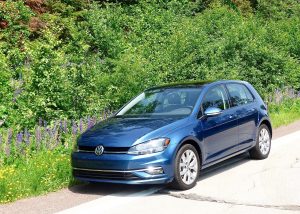
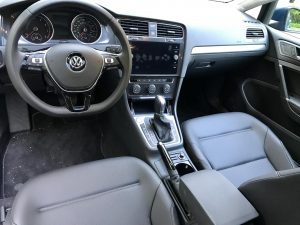
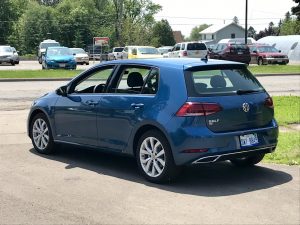
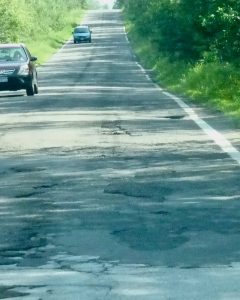
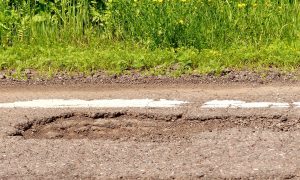
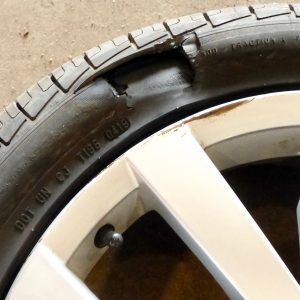
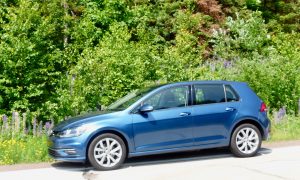
 John Gilbert is a lifetime Minnesotan and career journalist, specializing in cars and sports during and since spending 30 years at the Minneapolis Tribune, now the Star Tribune. More recently, he has continued translating the high-tech world of autos and sharing his passionate insights as a freelance writer/photographer/broadcaster. A member of the prestigious North American Car and Truck of the Year jury since 1993. John can be heard Monday-Friday from 9-11am on 610 KDAL(www.kdal610.com) on the "John Gilbert Show," and writes a column in the Duluth Reader.
John Gilbert is a lifetime Minnesotan and career journalist, specializing in cars and sports during and since spending 30 years at the Minneapolis Tribune, now the Star Tribune. More recently, he has continued translating the high-tech world of autos and sharing his passionate insights as a freelance writer/photographer/broadcaster. A member of the prestigious North American Car and Truck of the Year jury since 1993. John can be heard Monday-Friday from 9-11am on 610 KDAL(www.kdal610.com) on the "John Gilbert Show," and writes a column in the Duluth Reader.